How to Write a CV in the UK: Tips, Template & Example
Learn how to write a good CV in a few steps. Make a successful CV for a UK job market following a dedicated CV template, expert tips, and examples.
Our customers were hired by:
We often hear that ‘done is better than perfect’. And yet you’re here to learn how to write the perfect cover letter. Luckily, writing the perfect cover letter is actually attainable, as long as we’re careful with how we define perfection.
The perfect cover letter is the one that gets you an invitation to a job interview. This article will show you how to write a perfect cover letter—one that’s properly and compellingly set-out, absolutely free from spelling and grammar mistakes, and one that shows what you can bring to your new employer by describing what you’ve achieved in the past. All with plenty of perfect cover letter examples.
Use the LiveCareer cover letter builder and your cover letter will write itself. Choose a professional template, answer a few easy questions and the creator will generate a professional cover letter for you with just one click.
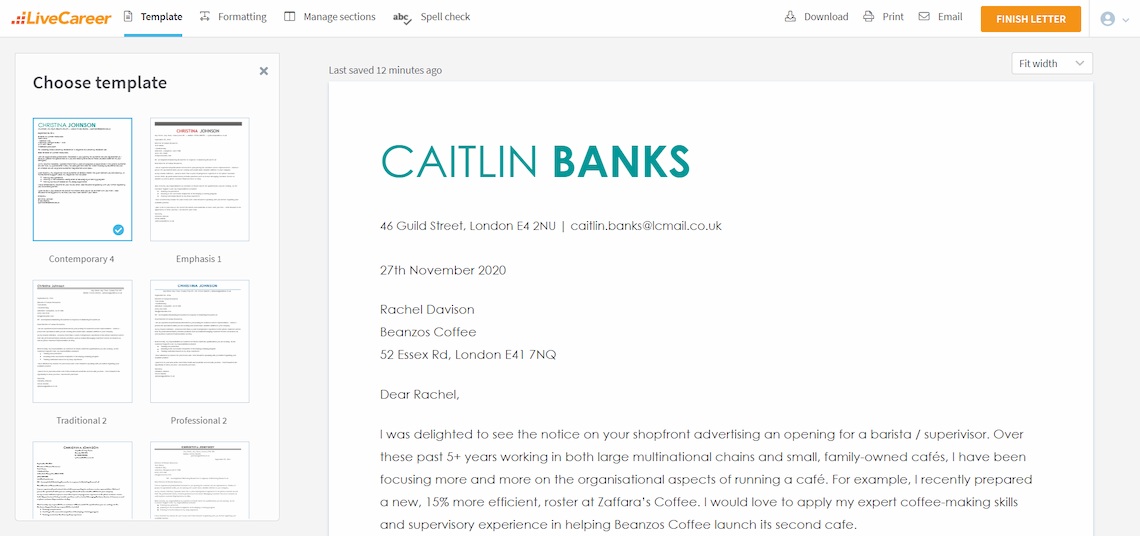
Looking for advice on cover letter writing instead? Check these guides:
Caitlin Banks
46 Guild Street
London
E4 2NU
071 2345 6789
caitlin.banks@lcmail.co.uk
27th November 2021
Rachel Davison
Owner
Beanzos Coffee
52 Essex Rd
London
E41 7NQ
Dear Rachel,
I was delighted to see the notice on your shopfront advertising an opening for a barista / superivisor. Over these past 5+ years working in both large multinational chains and small, family-owned cafés, I have been focusing more and more on the organisational aspects of running a café. For example, I recently prepared a new, 15% more efficient, roster at Zaffara’s Coffee. I would love to apply my expert coffee-making skills and supervisory experience in helping Beanzos Coffee launch its second cafe.
No stranger to making consistently excellent coffee in high-volume and high-energy environments, I served 40+ customers each morning rush (7–10 a.m.) every weekday, all while training new baristas and keeping an eye on the more junior staff. Being entrepreneurially minded, I successfully up-sold nearly 35% of orders at the point of sale by enticing customers to purchase biscuits and pastries to go with their coffees, bringing in over £700 extra revenue each month on average. Seeing that a new Tarcups Coffee was opening in our area, I pushed for the implementation of a coffee+biscuit combo of the day rotation that ended up boosting sales by as much as 10% over the first year, in spite of the extra competition.
As you can see, I have achieved impressive results as both a barista and supervisor. I think the skills I have picked up along the way could be particularly useful to Beanzos as you fully launch your Annerly Road cafe.
Thank you for taking the time to consider my application. I would be very grateful for an opportunity to discuss in more detail exactly how I can help Beanzos achieve its goals.
Yours Sincerely,
Caitlin Banks
Here’s how to write an impactful cover letter and more on a cover letter definition and purpose if you want to explore further.
Writing the perfect cover letter means following the standard UK business letter format. So align to the right your full name, postal address, email address, and phone number. Skip a line and type out the date of writing. Always write this date in the form nth Month Year, e.g. 1st May 2021.
Skip another line and align to the left the recruiter’s full name, their job title, company name, and company address. Don’t include the recipient's email or phone number when addressing your cover letter. You’re only including those details in your part of the header to make yourself easier to contact—they’re not part of the traditional header layout.
Caitlin Banks
46 Guild Street
London
E4 2NU
071 2345 6789
caitlin.banks@lcmail.co.uk
27th November 2021
Rachel Davison
Owner
Beanzos Coffee
52 Essex Rd
London
E41 7NQ
You can adjust every cover letter created in the builder to meet the job requirements. Choose the name of your profession and the company to which you’re applying, and the LiveCareer cover letter builder will automatically adapt the content for you. Create a cover letter faster than you ever thought possible and apply for the job in record time.
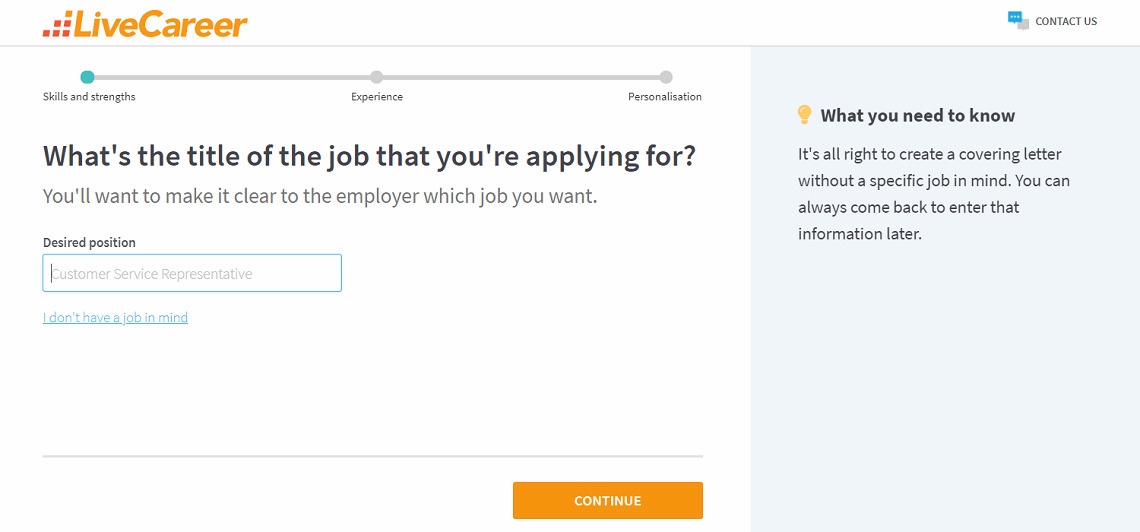
The perfect cover letter is one that engages your reader in a friendly, personal, and professional way right from the outset. The next element to include in a cover letter is a header. A well set-out header is going to be invisible, a mere formality (a poorly set-out one, though, is a flashing red warning light). It’s your salutation that helps you make a connection.
How you begin your cover letter is going to depend mainly on the corporate culture at the company to which you’re applying. Some companies are more traditional, conservative, or even downright old-fashioned. Others pride themselves on being completely informal and having a totally flat hierarchy.
How will you know where your company fits on this spectrum? By doing some background research online and getting a feel for its culture. Check its website, press releases, and any recent articles or interviews. Keep in mind that you might be writing to someone much more senior than you in any case.
Start your perfect cover letter with ‘Dear + first name’ if what you’ve learnt about the company tells you that this would be appropriate and if there isn’t too great a seniority gap between you and your reader. Go with ‘Dear + title + surname’ if a more formal tone is going to be more appropriate.
Always use ‘Ms’ for women who don’t hold academic or religious titles or military rank. Make doubly sure you actually know a person’s gender before using a gendered title like ‘Ms’ or ‘Mr’ (many names can leave you guessing). Check the company website and creep around on LinkedIn to find out.
If you can’t determine the recruiter’s gender, then use the somewhat awkward ‘Dear + first name + surname’. But what if, in spite of your best efforts at online sleuthing, you don’t even know to whom you should address your cover letter? Call the company and ask. This is a huge part of writing the perfect cover letter.
In the extremely unlikely event that you can’t pin down who the recruiter will be, use their job title (if you have it) or their function (as a last resort). For example, ‘Dear Accounting Department Deputy Head’ addresses your letter to a position, whereas ‘Dear Hiring Manager’ points to a function only. Avoid “To Whom It May Concern” at all costs.
Dear Rachel,
The perfect cover letter will connect with the recruiter through its salutation and then really grab their attention with a strong opening paragraph. The perfect opening demonstrates your enthusiasm for the job, hints at what you bring to the table, and makes it clear that you’re a great long-term fit.
Show your enthusiasm not just through the kind of language you use, but through your knowledge of the company. Drop relevant and current titbits regarding the company into your writing, but don’t let it seem insincere or forced. Introduce yourself and lead with a recent on-the-job achievement.
An achievement is just a brief, usually one-sentence description of an action you took at work and the benefits that your employer gleaned as a result. These actions are most often taken in response to a problem or challenge. Achievements are, ideally, measurable and quantified, which means they have to be concrete.
Start each achievement with a commanding verb, like ‘created’, ‘organised’ or ‘increased’. Use something like the STAR method to generate achievements based on your actions. Come up with 3–4 achievements and choose the most impressive one to include here. The others will go into your next paragraph(s).
Finally, connect the dots and explain how you can apply the same skills that led to your achievement to the position for which you’re applying now. Do this only if it’s not already obvious (as it often is). This is another excellent opportunity to slip in some more results of your research into the company.
What if you don’t have any paid work experience? Start with your passion for the role and knowledge of the company. Include a relevant achievement from your studies or any volunteer or placement work you’ve done. Add a belief statement that shows how you’re a match for the company and its stated values and mission.
Whether you have experience or not, this is the time to mention if you were referred to the position. Being recommended to the role is far from being something you should shy away from mentioning—hiring referrals brings benefits to companies and most of them know it, so always drop names if you can.
There’s a lot happening in the perfect cover letter opening paragraph, but it does everything it does in very few words. Keep it short at 40–80 words, the fewer the better.
I was delighted to see the notice on your shopfront advertising an opening for a barista / superivisor. Over these past 5+ years working in both large multinational chains and small, family-owned cafés, I have been focusing more and more on the organisational aspects of running a café. For example, I recently prepared a new, 15% more efficient, roster at Zaffara’s Coffee. I would love to apply my expert coffee-making skills and supervisory experience in helping Beanzos Coffee launch its second café.
You don’t have to create any content yourself. The LiveCareer cover letter generator will automatically suggest the best content for your cover letter with ready-made examples and expert tips.
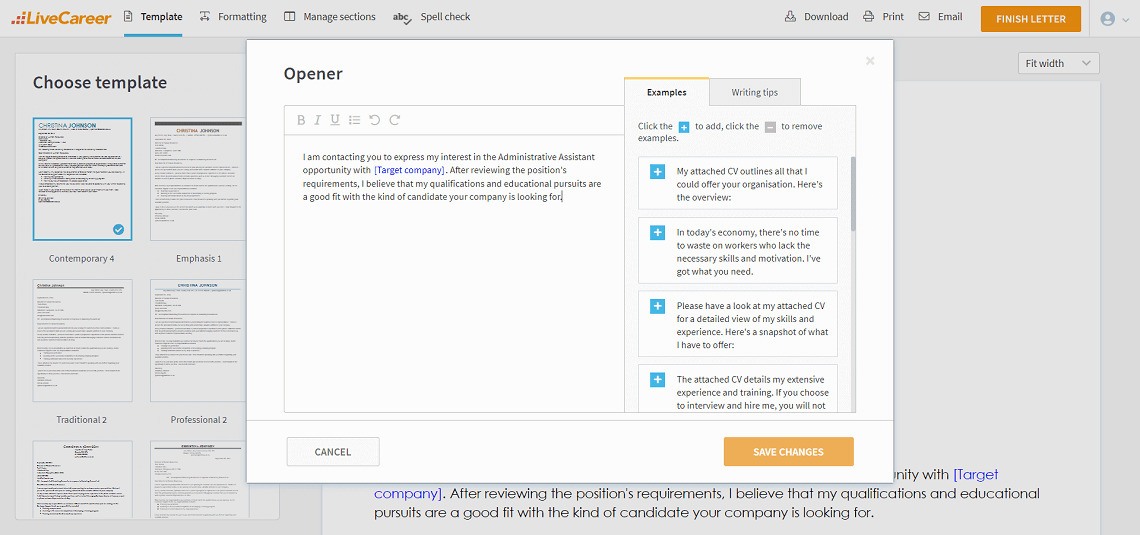
Writing the perfect cover letter takes a downhill turn in difficulty from this point on. The main part of the body of your cover letter will be a showcase of two or three of your achievements. Simply describe these achievements one after another. Add just enough writing to help make them add up to a whole.
If you don’t have much or even any experience, then describe situations in which you’ve demonstrated skills that match the job description. Quantify these wherever possible, even if only the scale at which you did something (i.e. how many times you did it or how much of something you did).
You can break this part of your cover letter into two paragraphs if one is going to be too big a block of text. Whether you make this one or two paragraphs, you can use bullet points to make it easier to read and clear at a glance. Remember that the perfect cover letter is concise: keep this part at 120–200 words.
No stranger to making consistently excellent coffee in high-volume and high-energy environments, I served 40+ customers each morning rush (7–10 a.m.) every weekday, all while training new baristas and keeping an eye on the more junior staff. Being entrepreneurially minded, I successfully up-sold nearly 35% of orders at the point of sale by enticing customers to purchase biscuits and pastries to go with their coffees, bringing in over £700 extra revenue each month on average. Seeing that a new Tarcups Coffee was opening in our area, I pushed for the implementation of a coffee+biscuit combo of the day rotation that ended up boosting sales by as much as 10% over the first year, in spite of the extra competition.
The perfect cover letter closing paragraph doesn’t leave any loose ends hanging while giving recruiters a clear indication of how keen you are to move on to the next stage of the recruitment process. More than that, the perfect cover letter gives the recruiter a concrete next step with which to follow up.
Summarise your achievements and tie them back into benefits for your potential new employer. Do this only if it isn’t obvious already. Don’t repeat yourself or labour the point. As with the opening and main body paragraphs, keep your closing paragraph short and to the point: 40–60 words.
Thank the recruiter for their time. Reading through and weighing up your application is just one of the many things they have to do in their busy schedule and a little gratitude can go a long way. Suggest a follow-up phone call or interview in a confident call to action (CTA). Show off your company knowledge.
As you can see, I have achieved impressive results as both a barista and supervisor. I think the skills I have picked up along the way could be particularly useful to Beanzos as you fully launch your Annerly Road café.
Thank you for taking the time to consider my application. I would be very grateful for an opportunity to discuss in more detail exactly how I can help Beanzos achieve its goals.
When it comes to writing the perfect cover letter, there’s nothing easier than signing off. That doesn’t mean there isn’t a right way to do it. Use ‘Yours Sincerely’ if you addressed the cover letter to someone by name and use ‘Yours Faithfully’ if you didn’t and used something like ‘Dear Hiring Manager’.
Leave a couple of lines blank and then type out your full name. The blank lines are to leave space for your handwritten signature. Do sign your cover letter above your name if you’re printing it out and submitting it in hardcopy. Leave the extra space all the same even if you’re sending it in electronically.
Yours Sincerely,
Caitlin Banks
The perfect cover letter follows the right letter format and has all the right content, it’s also absolutely word-perfect and set out for maximum readability. Your cover letter should nicely fill an A4 page and come in at a total of 250–400 words. Leave your margins at the standard 2.5 cm but space everything out.
Use a font that’s both understated and professional, like Liberation, Arial, Noto, or even Calibri. If in doubt, leave it at the defaults. Whatever font you choose, keep the size locked in at 11–12 points. Use plenty of white space to clearly break your cover letter down into sections, making it as readable as possible.
Make sure the overall look and layout of your cover letter matches that of your CV. Both documents make up a single job application together and their appearance should signal this fact. So use font-choice, layout, and colour (if any) to create a clear and obvious connection between the two documents.
Proofread your cover letter for spelling and grammar mistakes. Use whatever software you need to achieve this and get someone to help you. Finally, save your work in PDF unless you’ve been explicitly asked for something else. This will help to protect the effort you’ve put into formatting your documents.
A cover letter alone simply won’t be enough—you need an impactful CV, too. Create your CV in minutes. Just follow our wizard and fill in every CV section with ready-made content. Get started by choosing a professional CV template.
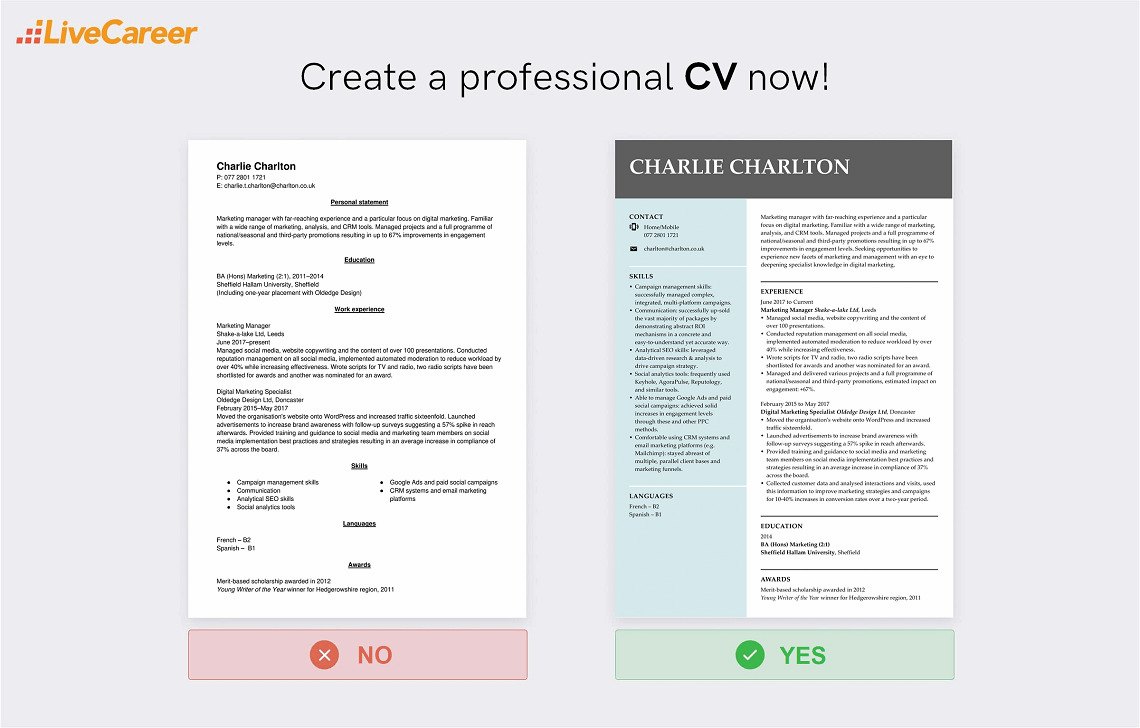
So now you know how to write the perfect cover letter. Work through this guide step by step and you can hardly go wrong. Is there anything I’ve covered that you’d like more details on? Leave your comments, questions and job-hunting experiences down in the comments section below.
Our editorial team has reviewed this article for compliance with Livecareer’s editorial guidelines. It’s to ensure that our expert advice and recommendations are consistent across all our career guides and align with current CV and cover letter writing standards and trends. We’re trusted by over 10 million job seekers, supporting them on their way to finding their dream job. Each article is preceded by research and scrutiny to ensure our content responds to current market trends and demand.
About the author
Since 2013, the LiveCareer UK team has shared the best advice to help you advance your career. Experts from our UK editorial team have written more than one hundred guides on how to write the perfect CV or cover letter.
Rate this article:
Perfect cover letter
Average:
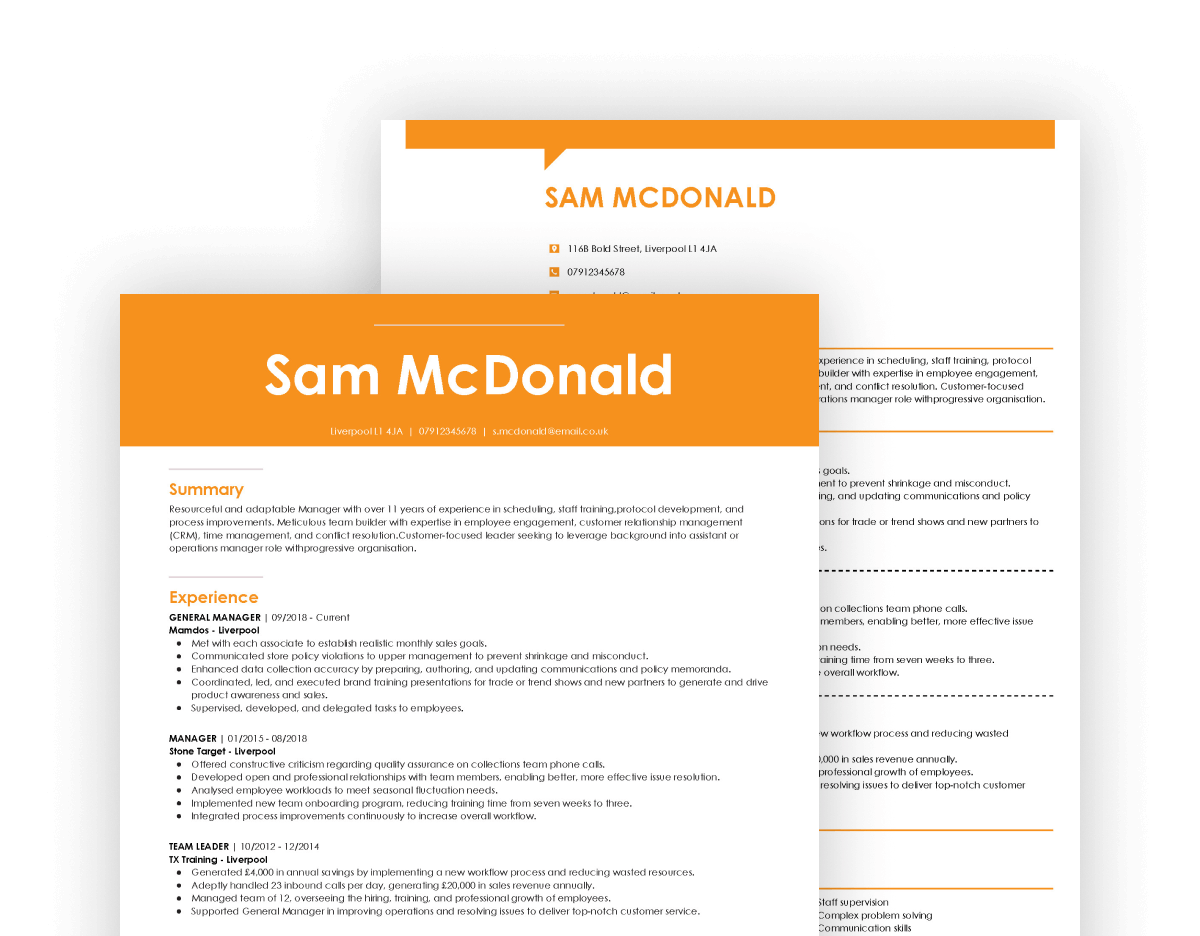
Learn how to write a good CV in a few steps. Make a successful CV for a UK job market following a dedicated CV template, expert tips, and examples.
How to write a cover letter for a job in 2025? This guide offers a step-by-step explanation and actionable tips for writing a cover letter for UK jobs.
How to write a personal statement? The best CV personal statement examples, and pro tips on writing a personal statement for UK jobs.
Our customers were hired by: